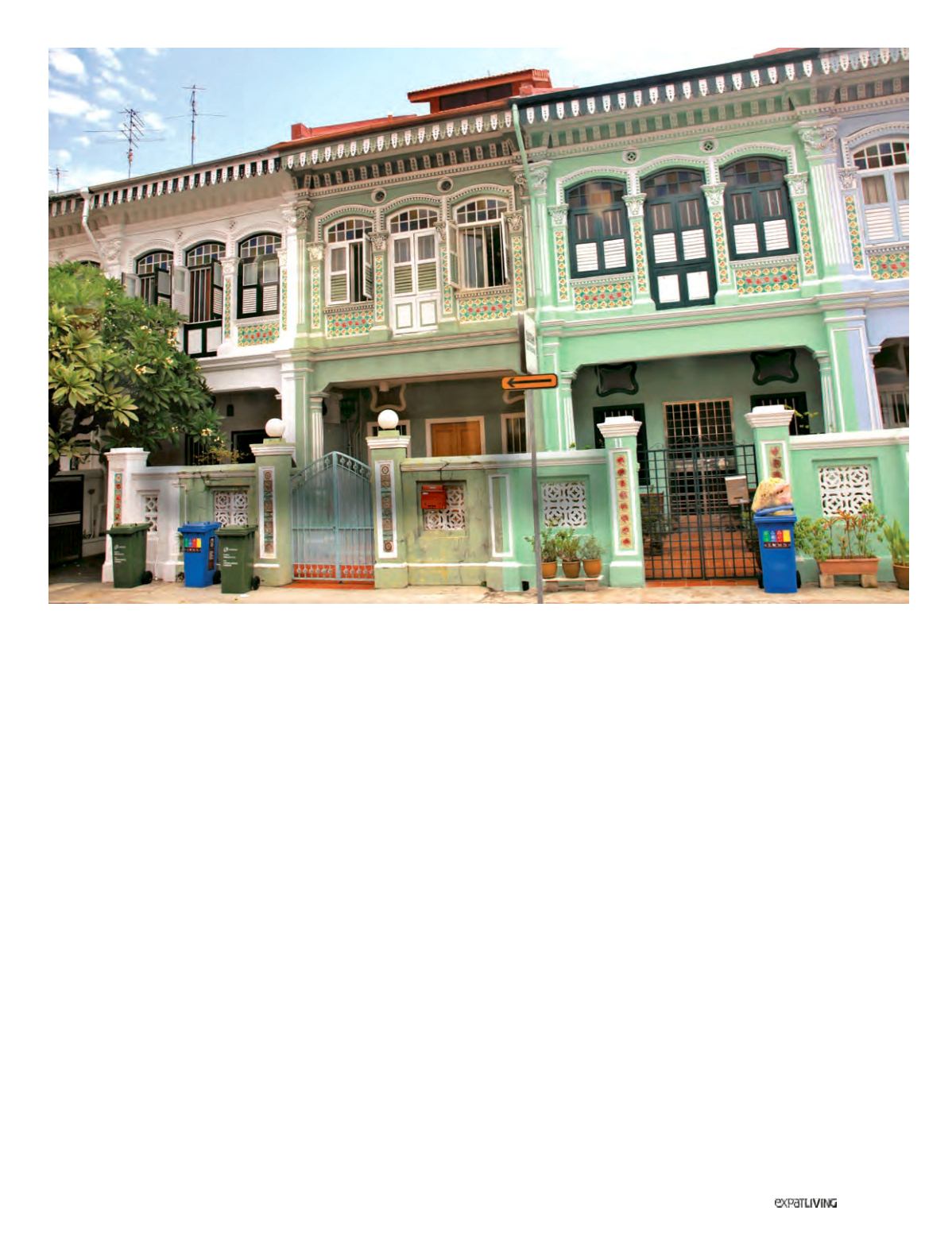

NEIGHBOURHOODS
157
June14
O
n the bus from Dempsey
coach park to Katong,
Geraldene takes the many
opportunities to point out
places of interest. The building site
opposite Tanglin Mall, for example, is the
soon-to-open Interpol Global Complex
for Innovation. Trips off the tongue,
doesn’t it? Luckily, they already have an
acronym for it – the IGCI.
In old colonial days, she explains,
all the British liked to live in
Tanglin
because it was so leafy and green.
As we’ll see later, rich Chinese and
other Asian communities far preferred
to live near the sea. Like many places
in Singapore, Tanglin is named after
a tree: the tanglin tree. Some say
it’s a derivation of the Hokkien
tang
leng
, meaning “eastern hills”; but as
Geraldene points out, this prestigious
area is not the east and it’s not that hilly.
Doyenne of local tour-guiding for more than 50 years, GERALDENE
LOWE is semi-retired in Perth, Western Australia, but still comes
back to lead occasional tour groups in Singapore.
Verne Maree
joined a fascinating bus tour of multicultural Katong on the East
Coast, home to a plethora of eateries, historic temples and other
architectural gems.
Orchard Road
used to wind through
a series of nutmeg, pepper and fruit
orchards. Scotts Road was named for
the port harbourmaster who owned
property here, and the presidential
Istana, or palace, was a German
plantation owned by the Prinseps –
hence Prinsep Street.
We pass
Tekka Market
, previously
called KK Market, where buffalos used
to be penned; hence Buffalo Road and
Kerbau Road. The market was built after
cattle were banned from the city. In the
old days, says Geraldene, you had to be
careful to specify which KK you meant, or
the taxi driver might take you to the nearby
KK Women’s and Children’s Hospital
instead of to the market. The new name,
Tekka, comes from the Hokkien
tek kha
,
meaning “at the foot of the bamboo”.
Next up is the Thieves’ Market, and
then on the left is the city’s main Muslim
area,
Kampong Glam
, dominated
by the dome and minarets of Sultan
Mosque. We pass the back entrance to
trendy Haji Lane, and then Arab Street.
Having turned right into Nicoll
Highway, into Beach Road and along
the Golden Mile, we cross the Geylang
and Kallang rivers, both now canalised.
The name
Bugis
, we’re told, comes
from Kampong Bugis, previously home
to a tribe of tall, handsome sailors from
Sulawesi Island.
“They used to come up the rivers
to sell their exotic birds and spices,”
says Geraldene. She remembers that
the sailors would turn their boats onto
their sides on the beach and smoke
the insides to kill the borer; then they’d
collect the bark of the paperbark or
glam tree to stop up any holes; it also
served for awnings, sails and firewood.
That, of course, is how Kampong Glam
got its name.
Kallang
is where, in the 1930s, the
first proper airport was built. “This was
originally a very swampy area,” says
Geraldene, “and there was a village here
called Kampong Arang,
arang
meaning
charcoal.” After the war, in 1955, the
airport was moved to Paya Lebar.
Colourful
KATONG



















